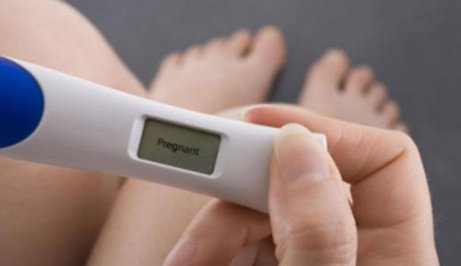How to Choose the Right Types of Pregnancy Tests

What are the safest types of pregnancy tests? This is a question that many mothers ask themselves.
Today, over-the-counter pregnancy tests are the easiest, fastest and most comfortable way to find out if you’re pregnancy. However, the accuracy depends on choosing the right type for you, and using it correctly.
The most reliable types of pregnancy tests
Women can find a variety of pregnancy tests on the market, though some are more accurate than others. It’s up to you to decide how you want to obtain the results.
If you just want to find out if you’re pregnant or not, then all you need is a simple test strip. In most cases, these tests provide trustworthy results.
However, some women want to know how far along they are, in addition to finding out if they’re pregnant. If that’s your case, then you should opt for a digital test.
Digital tests are safe and accurate. They not only tell you if you’re pregnant or not, but also how many weeks have passed since conception. These tests are the most advanced tests available and are number one on the list of reliability.
Pregnancy tests: When is the best time to take one?
Eliminating doubt and anxiety about pregnancy takes more than just a reliable pregnancy test. It’s also important that you take the test at the right moment.
Pregnancy tests detect the human chorionic gonadotropin hormone in a pregnant woman’s urine. The cells of the placenta release this hormone at the beginning of pregnancy. However, you must wait until at least 15 days after conception in order for a pregnancy test to detect it.

The best thing you can do is wait until your period is delayed at least two days and take the test 2 weeks after possible conception. It’s true that there are tests that can detect the hormone during the first week of gestation. However, these aren’t always reliable. They can very easily provide a false negative.
The best time of day to take a pregnancy test is in the morning. Your day’s first urine possesses a larger concentration of the human chorionic gonadotropin hormone.
How do pregnancy tests work?
The function of pregnancy tests is to detect the human chorionic gonadotropin hormone to determine if a woman is pregnant or not. Pregnancy tests fulfill this task through bands or strips that are prepared to react to this hormone.
Using pregnancy tests is very simple, but you should read the specific instructions of whatever test you choose. After unwrapping the test and taking off the cap, you should urinate and wet the end of the test, per instructions.
Then, replace the cap right away and make sure the tip doesn’t test any other surface. Place the test on a flat surface and wait for several minutes before looking at the results.
“Eliminating doubt and anxiety about pregnancy takes more than just a reliable pregnancy test. It’s also important that you take the test at the right moment. You must wait until at least 15 days after conception in order for a pregnancy test to detect it”
The results will appear differently according to the brand and type of test you choose. You should carefully read the instructions before testing.
With some brands, the results appear in a small window on the test stick. If you’re pregnancy, then 2 lines will show up. Some brands use two parallel lines, while others use 2 lines in the form of a plus sign (+). Even a faint second line is an indication of pregnancy.
Digital pregnancy tests provide more complete results. In other words, the results appear in words. If the test is positive, you’ll read the words “pregnant” or “yes” on the screen. You’ll also be able to read how many weeks have passed since conception. For example: 1-2, 2, 3, or 3+.
Can pregnancy tests provide false results?
If you follow instructions correctly and take the test at the right time, then accuracy is 98%. However, there are certain circumstances that can cause false results.
The reason behind a test’s failure to provide accurate results can be trophoblastic illness. In other words, illnesses and some cancers that increase the human chorionic gonadotropin hormone can produce a false positive.

If you’re receiving this hormone as a treatment in order to become pregnant, this can be another cause for a false positive. Hormonal disorders can also raise production and lead to a false positive.
On rare occasions, even the most reliable tests can give a false result. While this seldom happens, the causes may include very diluted urine, or not having used the first urine of the day.
That being said, over-the-counter pregnancy tests – used correctly – promise 98% accuracy. Keeping that in mind, if you’re wondering whether or not you’re pregnant, pregnancy tests are the surest way to find out.
This text is provided for informational purposes only and does not replace consultation with a professional. If in doubt, consult your specialist.








